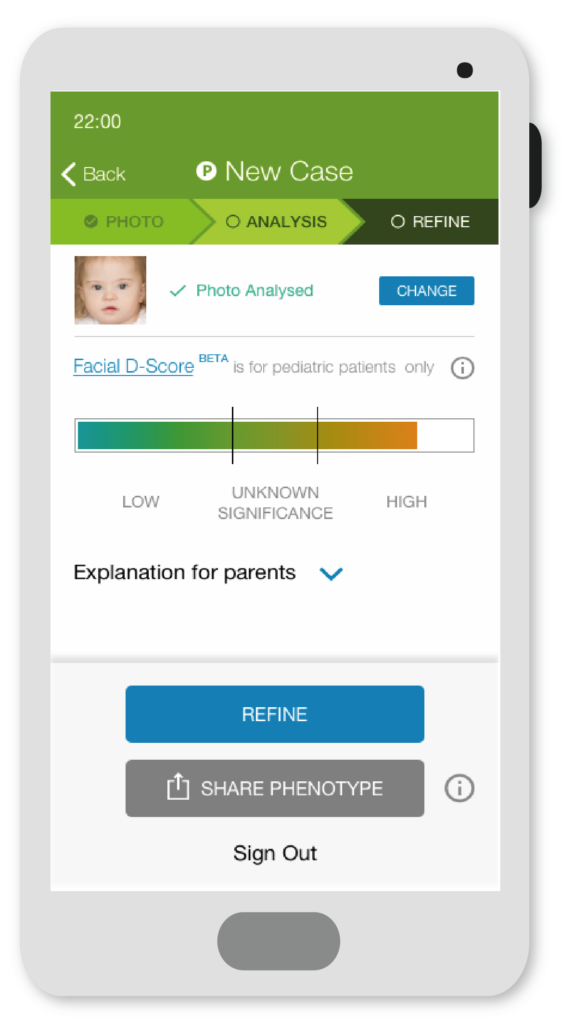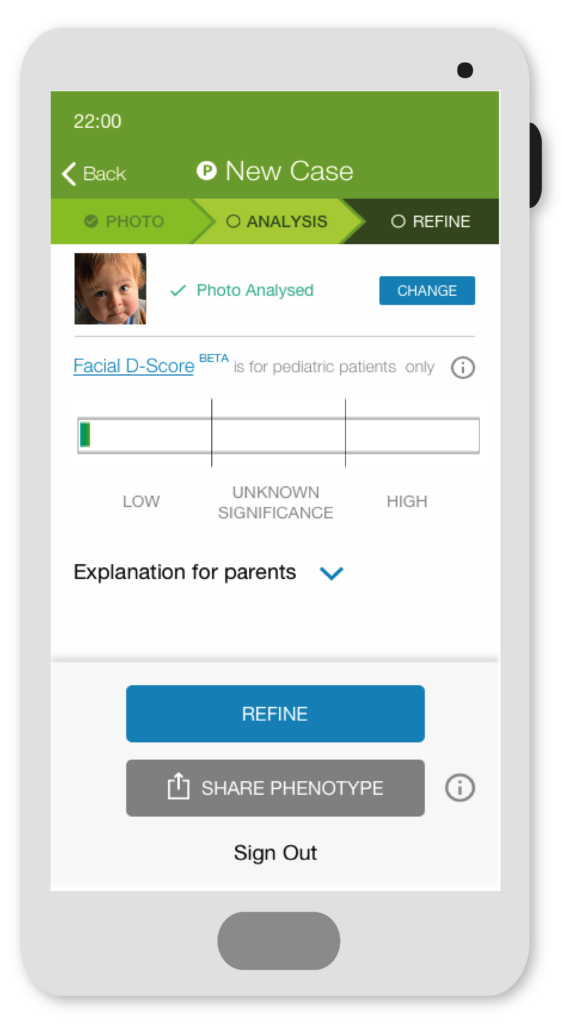Does my patient show facial dysmorphology?
To ease pediatrician’s clinical workflow, we have developed a different view in Face2Gene’s CLINIC. The Pediatrician View includes a newly developed technology, Facial D-Score, that enables clinicians to receive a guideline about facial dysmorphology being present. This score can support the decision of referring the patient to genetic diagnostic workup. More information in this JMIR publication.
How to use the Facial D-Score?
After taking a portrait photo in Face2Gene’s Pediatrician View, the algorithms convert the image into a de-identified vector and then calculate a normalized score called the Facial D-Score. A higher D-Score means a greater possibility of dysmorphic features present in your patient’s photo.
See in this short video, Dr Karen Gripp explanation of this tool.

A higher D-Score means a greater possibility of dysmorphic features present in your patient’s photo.
How was the Facial D-Score developed?
Based on two previously published algorithms, DeepGestalt (Nature Medicine) and GestaltMatcher (Nature Genetics), we built descriptors to differentiate between 2 classes of frontal facial photos: images of patients diagnosed with a rare genetic disease and presenting facial dysmorphology, and an equivalently sampled second class of images of unaffected individuals. The tool currently supports pediatric-aged patients only.
In this recent publication, you can read how this has been used, as well as in this preliminary study.
Please contact us for any questions.

The result can suggest if a genetic consultation is likely to be helpful or not.
How to explain the need to take a photo to parents?
There are unique facial patterns that can suggest an underlying genetic cause. Taking a photo and having Face2Gene analyze it can evaluate such facial patterns. The result can suggest if a genetic consultation is likely to be helpful.
Would you like to know more? Please contact us at support@fdna.com























































